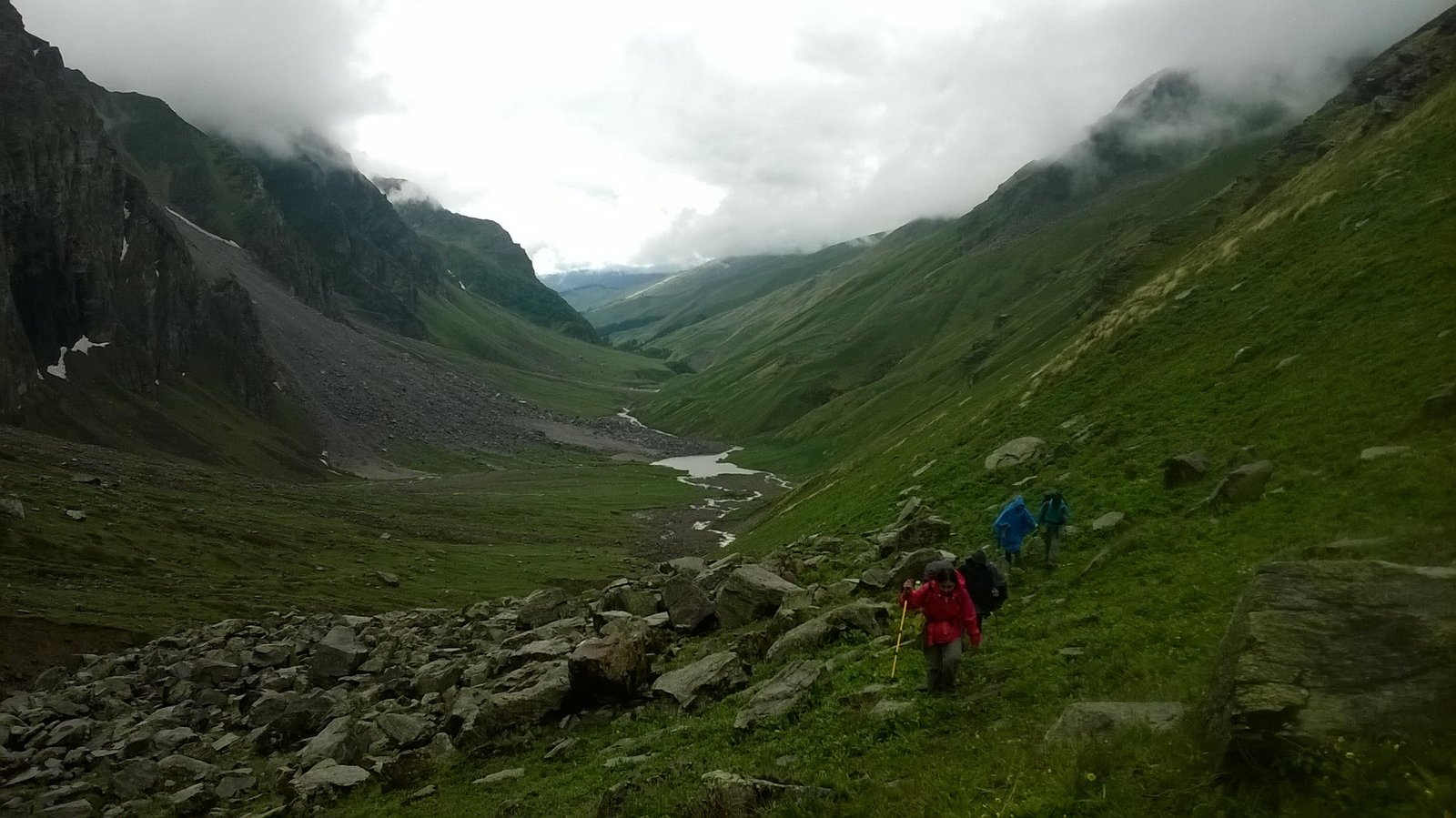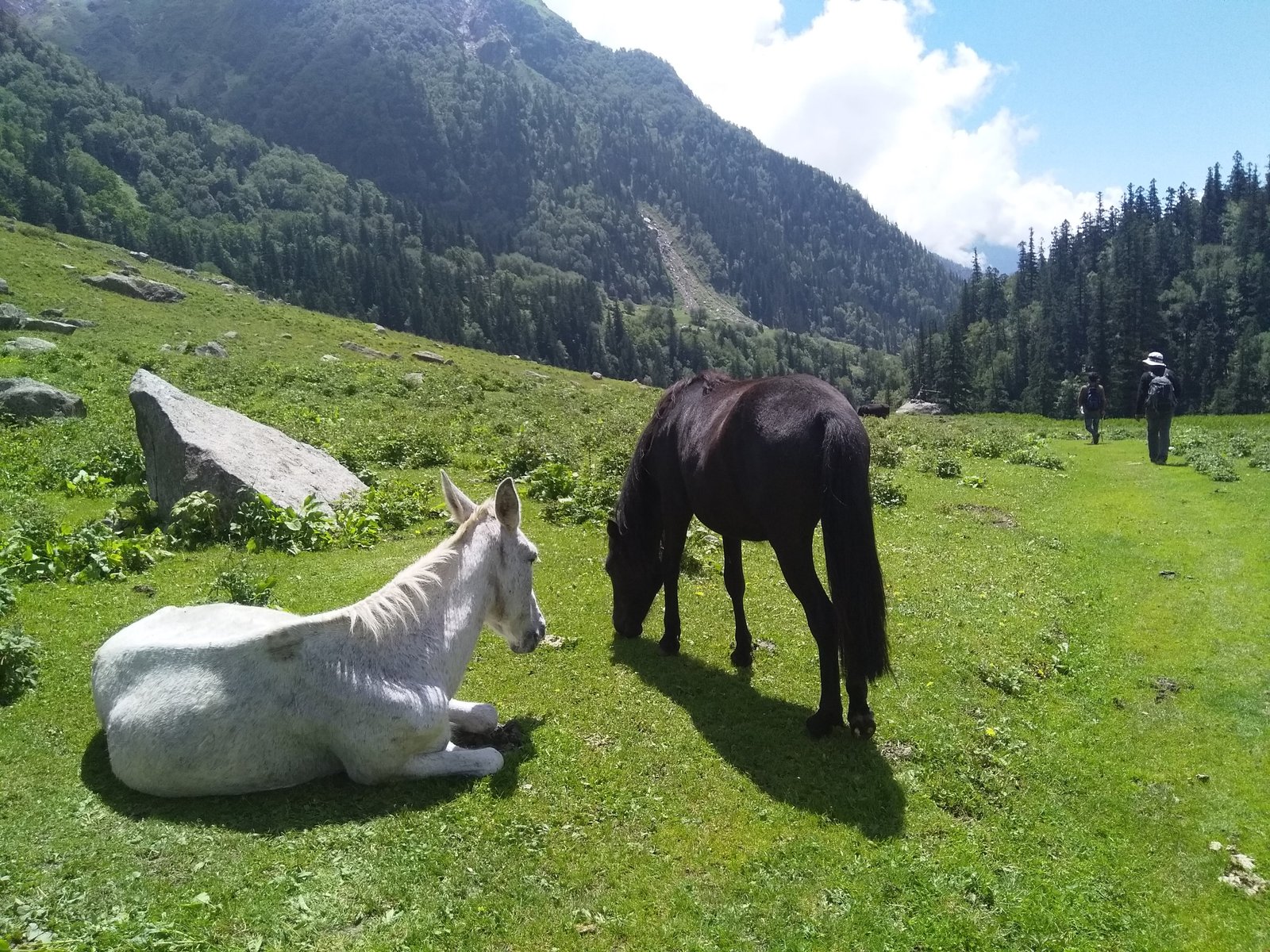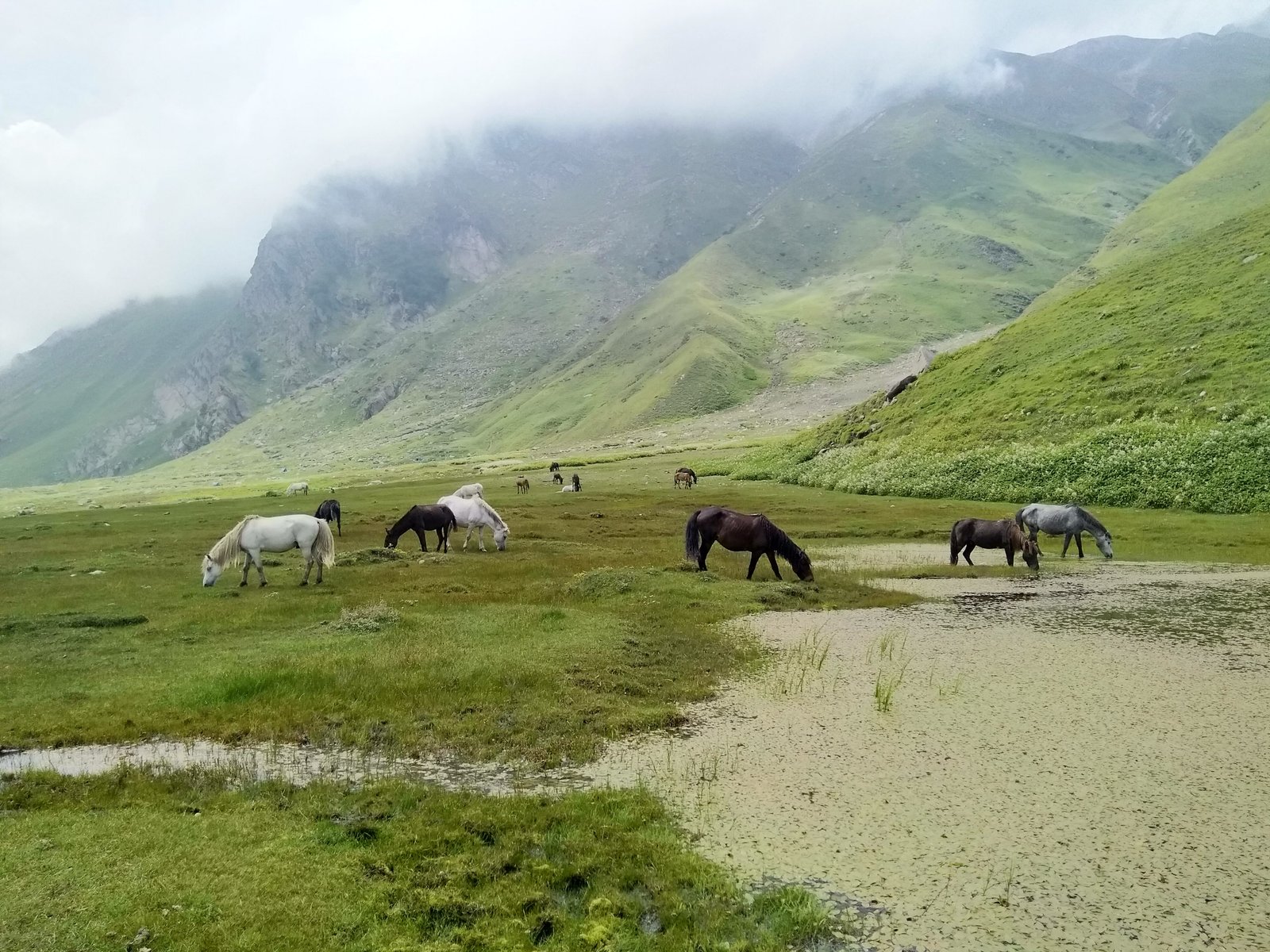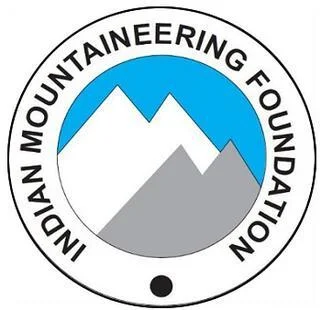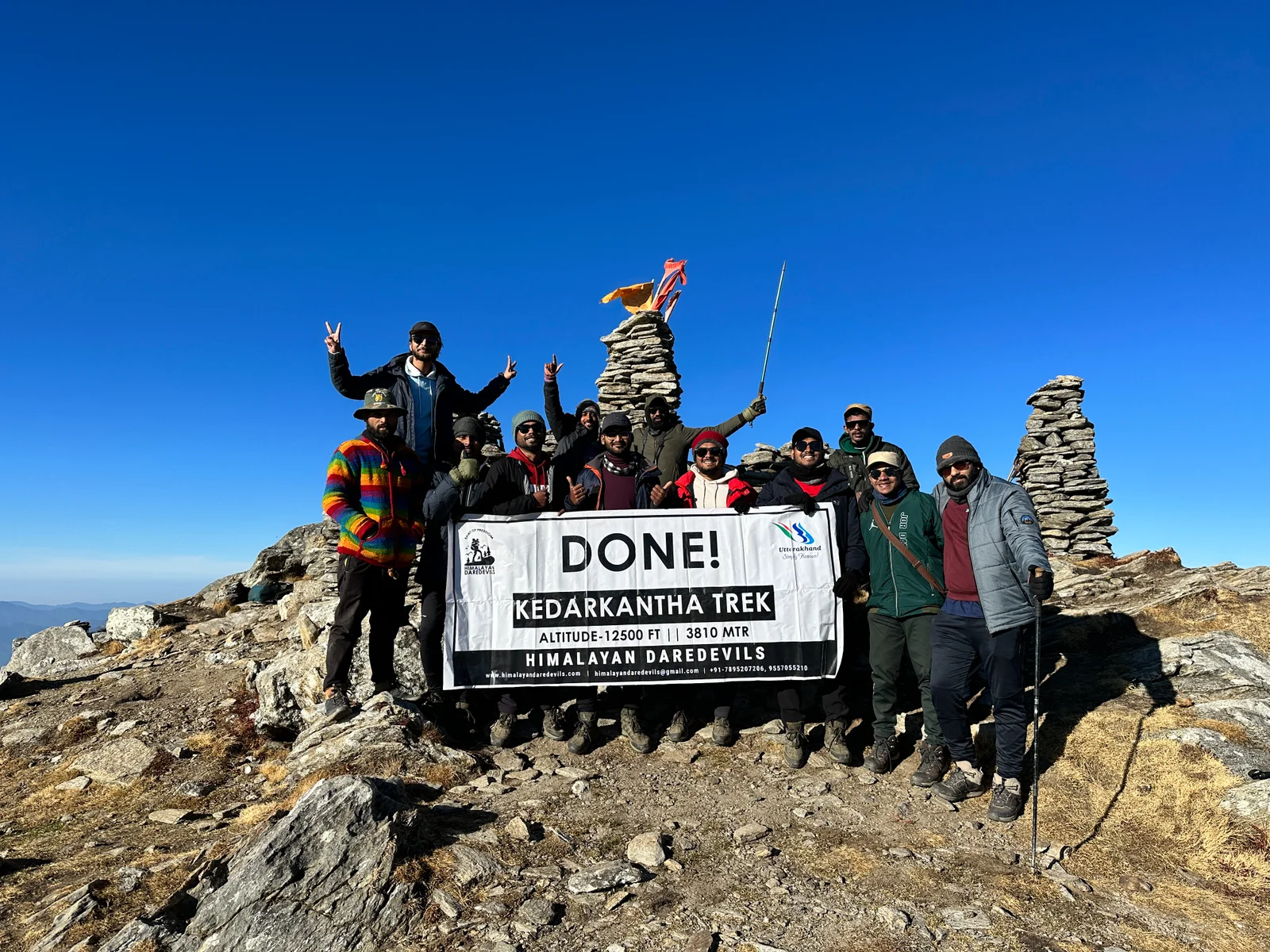Starting From
13,800
12,000.00
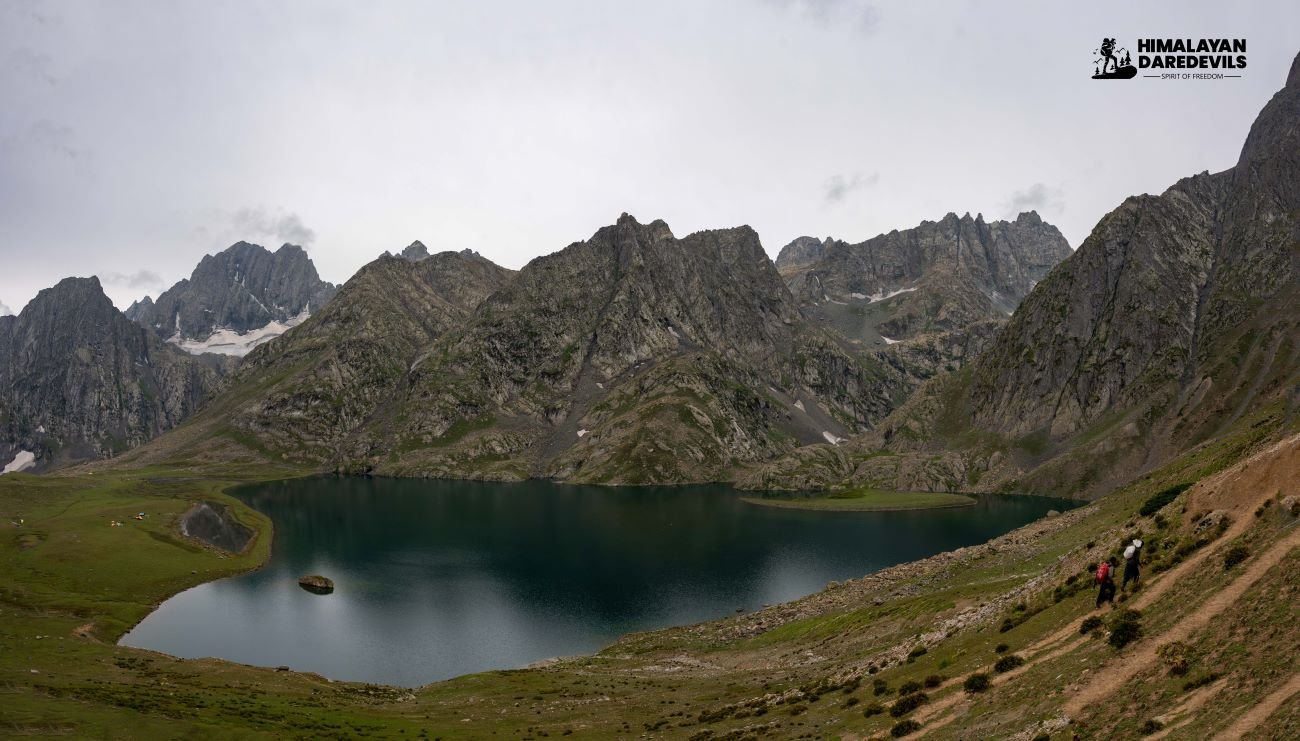
Starting From
13,800
12,000.00
Starting From
13,800
12,000.00
Sheshnag Lake Trek (469+ Reviews)
The trek starts and ends in Pahalgam
Jammu Railway Station
Srinagar Airport
Pahalgam
June ,July, August, September
Pahalgam to Pahalgam
Veg
Homestay/ Camping
Kashmir
3 Days
Easy
11780 ft
12 Km
Overview
Sheshnag Lake Trek Deep Bluish Lake amid Mountains
Sheshnag Lake Trek lies in the Kashmir Valley and it starts from Pahalgam; a famous tourist town. The Sheshnag Lake is perched at an altitude of 3590 m and lies on the Amaranth Yatra track.
This lake is home to a number of fishes. Its deep blue waters look gorgeous and its 1.1 km length makes it a great attraction amid mountains. It is fed by snow-covered mountains and streams above. Usually, in winters, it glaciates.
Hindu Mythology “Abode of Sheshnag”
Meaning of Sheshnag is “The King of Snakes”. According to the legends, Sheshnag himself dug this lake and it is believed that it is his abode.
The trek to it is extremely scenic, with breathtaking views of the surrounding mountain terrain and vast grassland terrain. The lake is linked to numerous mythological legends, one of which claims that it belongs to Sheshnag, Lord of the Snakes himself. According to legend, Lord Sheshnag dug this lake, which is now thought to be his abode.
The trails to these lakes are usually crowded with Hindu pilgrims en route to the holy site of Amarnath cave. Amarnath cave, which is generally covered in snow on all sides, is only open for a short period of time during the summers, when many devotees are permitted to visit. The Sheshnag Lake trek is a low-to-moderate-intensity hike with stunning views of the trail and the destination. Trekkers of all levels are encouraged to traverse its paths and marvel at its enthralling beauty.
A Must Do Short Trek in Kashmir
The lush green meadow surrounds Sheshnag Lake and makes the site more interesting. It is of great significance to Hindus because of the mythological beliefs.
It is a must visit place, easily accessible but remains inaccessible during heavy snowfall. Pass through Pahalgam and Chandanwari valley to reach this sacred site.
Itinerary
The transport will be arranged from Srinagar and the drive will be to Pahalgam which lays 100 kms away from Srinagar. You can reach Pahalgam through two routes, Bijbehra is the famous tourist route, and the drive is a beautiful one through rural area of Kashmir
Post breakfast head towards Chandanwari, the trail makes its way through the dense maple and fine forests along Ladder River. After a long hike, enter the exotic Chandanwari valley.
Have lunch in middle of the way. Afterwards ascend initially to Pissu top which offers jaw dropping sight. Now, the trail to Sheshnag Lake is steep.
Reach the 1 km long Sheshnag Lake, its deep blue waters looks gorgeous. Setup your camp nearby and settle for the day.
After spending a good night at the bank of Sheshnag Lake, descend to Pahalgam by retracing your steps. Reach Chandanwari, halt for a while and again start trekking through the dense maple forest.
Follow the same trail and reach Pahalgam. Rest there, then leave for Srinagar.
Sheshnag Lake Trek Map

Inclusions
Exclusions
1. Meals while on trek (Veg.).
2. All necessary entry fees and permits.
3. Accommodation:- Guest house / Camping during Trek.
4. Mountaineering qualified & professional trek Leader, guide, cook, and Support staff.
5. First aid medical kits, stretcher, and oxygen cylinder.
6. Trek equipment: Sleeping bag, mattress, tent, kitchen & dining tent, toilet tent, utensils, and crampon (if required)
7. Staff Insurance.
8. Porters/mules to carry central equipment.
1. Any kind of personal expenses.
2. Food during transit.
3. Mules or porters to carry personal luggage.
4. Insurance.
5. Transport (Non Ac)
6. Any kind of emergency evacuation charges
7. 5% GST
8.Any expense incurred or loss cost by reasons beyond our control such as bad weather, natural calamities (landslides, floods), flight delays/rescheduling/ cancellations, any accidents/medical evacuations, riots/strikes/war/pandemics etc.
9. Anything not specifically mentioned under the head.
1. Meals while on trek (Veg.).
2. All necessary entry fees and permits.
3. Accommodation:- Guest house / Camping during Trek.
4. Mountaineering qualified & professional trek Leader, guide, cook, and Support staff.
5. First aid medical kits, stretcher, and oxygen cylinder.
6. Trek equipment: Sleeping bag, mattress, tent, kitchen & dining tent, toilet tent, utensils, and crampon (if required)
7. Staff Insurance.
8. Porters/mules to carry central equipment.
1. Any kind of personal expenses.
2. Food during transit.
3. Mules or porters to carry personal luggage.
4. Insurance.
5. Transport (Non Ac)
6. Any kind of emergency evacuation charges
7. 5% GST
8.Any expense incurred or loss cost by reasons beyond our control such as bad weather, natural calamities (landslides, floods), flight delays/rescheduling/ cancellations, any accidents/medical evacuations, riots/strikes/war/pandemics etc.
9. Anything not specifically mentioned under the head.
What to carry
- Trekking shoes: A good pair of trekking shoes is essential for a comfortable and safe trek. Look for shoes that are sturdy, provide good ankle support, and have a good grip on different types of terrain.
- Backpack with rain cover (50-60 ltr): A backpack is necessary to carry all your gear. Make sure it's the right size for your trek, and comes with a rain cover to keep your belongings dry in case of rain.
- Thermals (upper and lower): Thermals are lightweight and comfortable base layers that help regulate your body temperature in cold weather. Bring both upper and lower thermals to keep warm.
- 3 T-shirts (advisable quick dry): Choose quick-drying T-shirts made from breathable and moisture-wicking materials. This will help keep you cool and dry during your trek.
- 2 trek pants: Choose lightweight and comfortable trek pants that are easy to move in and can dry quickly if wet.
- Jacket (-10 degrees): A warm jacket is essential for cold weather. Choose a jacket that is waterproof and windproof, and provides good insulation.
- Fleece or hood (2): Fleece jackets or hoodies are great mid-layer options to keep warm. Bring at least two, as they can also be used as an extra layer at night.
- Sunglasses (UV protected): Protect your eyes from the sun's harmful UV rays with sunglasses that are designed for outdoor activities.
- Sun cap: A sun cap or hat with a brim will protect your face and neck from the sun.
- Hand gloves: Bring a pair of lightweight gloves to keep your hands warm and protected from wind and sunburn.
- Woolen cap: A woolen cap will keep your head and ears warm at night or in cold weather.
- Socks (3 pairs min): Bring at least three pairs of good quality socks that are moisture-wicking and provide good cushioning and support for your feet.
- Headlamp: A headlamp will come in handy if you're hiking in low-light conditions or need to find your way in the dark.
- Trekking pole (if needed): Trekking poles can help reduce strain on your legs and provide additional support on steep terrain.
- Rain cover\poncho: A rain cover or poncho will keep you and your gear dry during unexpected rain showers.
- Day pack (if you plan to offload your bag): If you plan to offload your backpack during the trek, bring a smaller day pack to carry essentials like water, snacks, and a first aid kit.
- A toiletry kit: Bring a small kit with personal hygiene items, such as a toothbrush and toothpaste, wet wipes, hand sanitizer, and toilet paper.
- Lunchbox, cup, spoon: If you plan to bring your own food, bring a lunchbox, cup, and spoon to carry and eat your meals.
- 2 one-liter bottles: Staying hydrated is crucial, so bring at least two one-liter bottles to carry water.
- 2-3 plastic covers to keep your wet or used clothes: Plastic bags are useful for keeping wet or dirty clothes separate from the rest of your belongings. They can also be used to pack out any trash or waste you generate during the trek.
How to reach
By Air:- Most air carriers such as Air Indian Airlines, Jet Airways have regular flights to Srinagar. Getting to Srinagar by flight from New Delhi is considered the most conceivable.
By Train:- Jammu may be the closest railway station to Srinagar, which is at a distance of 290 km. Jammu railway station is nicely attached to other main towns in India by rail. Direct Rails are available from Delhi, Trivandrum, Bangalore and also Chennai.
By Bus:-Srinagar is connected through the National Highway 1A to all over the country. J & K transportation has regular comfy buses from Jammu. The Journey captures approximately ten hrs to arrive at Srinagar.
Fitness and preparation guide for Sheshnag Lake Trek
We recommend jogging as the best routine to get fit for a trek. It works on the same muscles that you use while trekking — your calves, glutes and hamstrings. It helps increase your stamina day by day. It is also an easy routine that does not require any equipment or tools.
Fitness target:
To do this trek comfortably, you must be able to cover 5 km in under 35 minutes. This is the minimum fitness required for this trek.
How to achieve this fitness?
- Start jogging at least 4 days a week
- If you cannot run 5 km immediately, start with 2 km and increase to 5 km over 2-3 weeks.
- Once you’re able to run 5 km, increase your pace day by day.
- Gradually increase your pace and bring it down to 5 km in less than 35 mins.
- You must be able to run 5 km in 35 mins consistently for at least 2 weeks before the trek.
This trek requires at least 6-8 weeks of preparation. The longer, the better. So plan your trek soon and start preparing.
Cancellation policy
Life is unpredictable and we understand sometimes you have to cancel or change your trip dates and it is our endeavour to make it as easy possible for you. However, please understand we plan everything including guide fees, permits, accommodation and ration in advance. Therefore any cancellation means inconvenience and certain losses to the people involved in various stages of programme. Keeping that in mind, our cancellation charges are as below-
Cancellation prior to 30 days from start of the event: Get monetary refund with 15% of cancellation charges on trek fee.
Cancellation between 30 days and 15 days to the start of event: 50% on trek fee is non refundable and the remaining 50 % will be given as cash voucher which is valid for 1 year.
Cancellation less than 15 days to the start of event: No refund.
Please note cancellation will be only accepted by email.
Booking amount is non refundable
Note: The Himalayan Daredevils reserves the right to cancel a programme before departure in the event of logistical problems arriving due to natural calamities, strikes, wars on any other circumstances that makes the event inadvisable. In this case, 50% on trek fee is non refundable and the remaining 50 % will be given as cash voucher which is valid for 1 year.
Itinerary changes & trip delays:
We plan itineraries based on the information at the time of planning and in rare circumstances, there are subject to change. In the event that the itinerary is changes or delayed due to unforeseen circumstances such as bad weather conditions, transportation delays, government intervention, landslides etc. We will always aim to give you the best experience possible. However The Himalayan Daredevils are not be held responsible for the cost of delay or changes.
Why Choose Us
